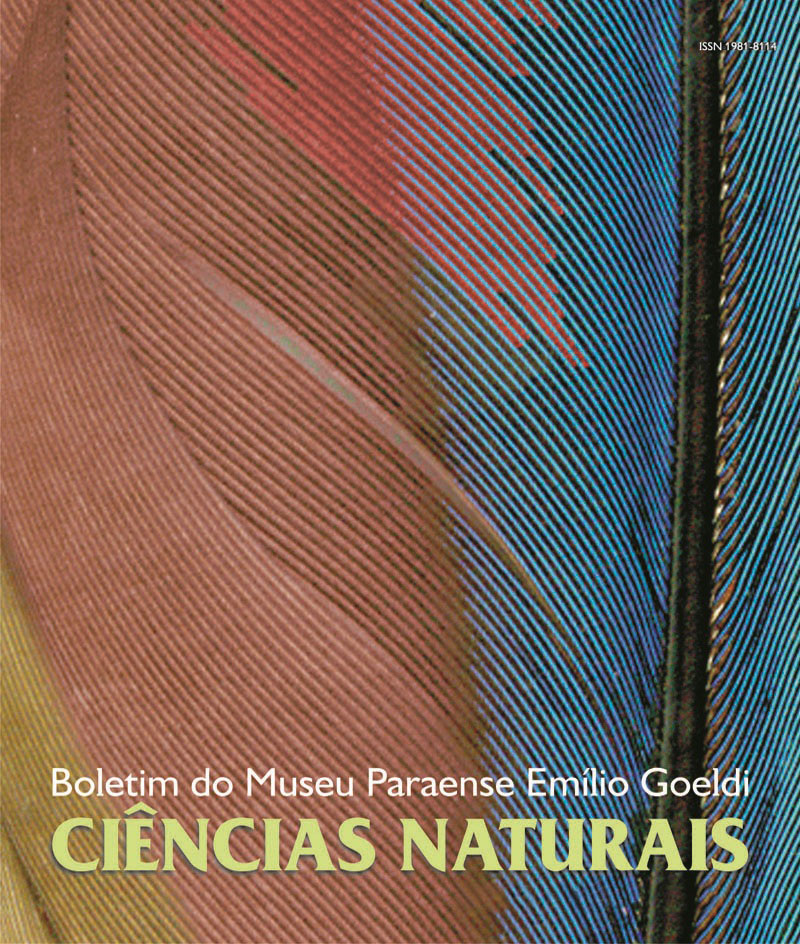Litterfall yield in a tract of terra firme forest adjacent to a mangrove stand on the Ajuruteua peninsula, Bragança, Pará
DOI:
https://doi.org/10.46357/bcnaturais.v1i3.730Keywords:
Arecaceae, Burseraceae, Simaroubaceae, Rhizophora mangle, Phenology, Ash contentAbstract
The present study focusses on differences in litter production of a terra firme forest fragment and an adjacent mangrove stand on the coast of the Bragança region. Litterfall was quantified by means of 10 litter traps (0.5 m2) in the mangrove and 10 in terra firme forest, installed along a transect orthogonal to the division between the two ecosystems. Material was collected fortnightly. Litter production in the mangrove forest (11.8 t·ha-1yr-1) was by a third higher than in terra firme forest (8.7 t·ha-1yr-1). Leaves were the most important litter component in both ecosystems (68 e 63% for mangrove and terra firme, respectively). In the mangrove, Rhizophora mangle contributed the major part of litter material. In terra firme, leaves of species of the families Simaroubaceae, Burseraceae e Arecaceae contributed 13, 12 e 11% of the leaf total; 54% of leaves were not identified taxonomically. In the mangrove, reproductive litter components showed seasonal patterns. It was not possible to identify a clear seasonal pattern in R. mangle leaf litter fall. However, in mangrove and terra firme, total litter production was higher in dry season.
Downloads
Published
Issue
Section
License
Publication means fully assigning and transferring all copyrights of the manuscript to the journal. The Liability Statement and
Assignment of Copyrights will be enclosed with the notice of acceptance. All the authors must sign the document and return it to the journal.








